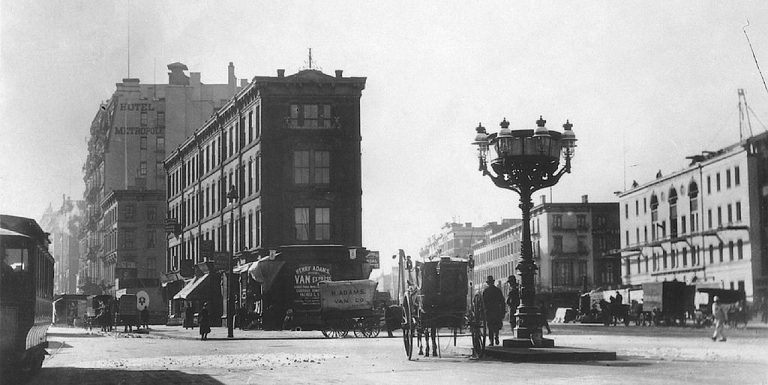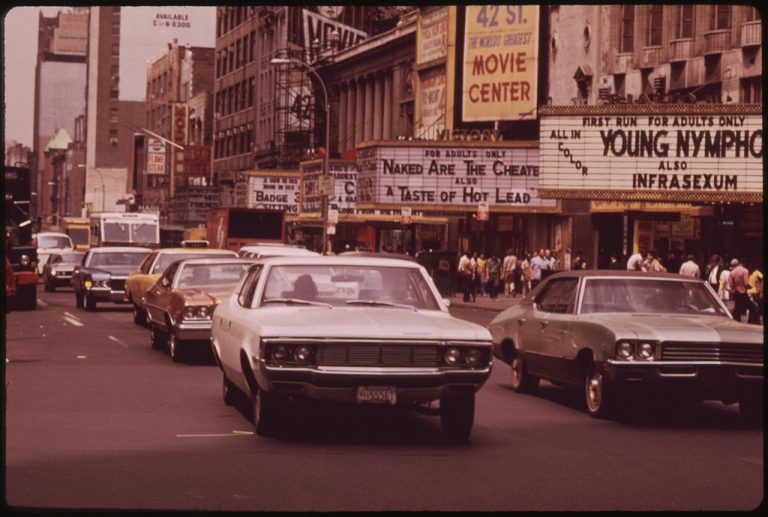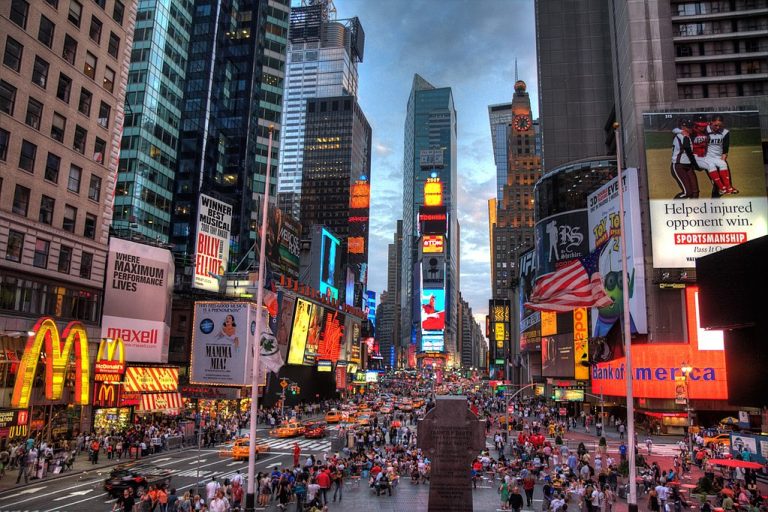A Brief History of Times Square

Every December 31st, the world's attention is drawn to a single intersection in New York City known as Times Square. Times Square is the stage to one of the world's most famous New Year's Eve celebrations. The event is broadcast all over the world and features performances by pop stars and celebrities, culminating in the famous ball drop.
Aside from its New Year's Eve extravaganza, Times Square is one of America's top tourist destinations year round. As many as 50 million tourists may visit the square in just a single year. But it hasn’t always been the glossy, shiny pop culture mecca that we see today. In fact, the square has seen many ups and downs throughout its history.
Until 1905, the Times Square intersection was called Longacre Square. For many years early in its history, the area was known for its role in the horse and carriage industry. As New York industrialized in the 19th century, adult entertainment moved into the area, and the square became known for clandestine activities including prostitution and crime.
When The New York Times, a famous newspaper, relocated to the intersection, it began to be referred to as Times Square. On December 31st 1904, just before the paper moved into its newly constructed headquarters, the Times' owner staged the first public New Year's Eve party at the intersection. The Times has since moved to a nearby location, but the nickname has withstood the test of time.
In the years following the Times move to Times Square, the area developed commercially and culturally. After World War I, it became the hub of New York's world-class theatre industry. However, when financial difficulties hit the industry hard in the wake of the stock market crash of 1929, Times Square began its evolution into one of the seediest areas in all of New York City.

The square became home to illicit activity of all kinds, primarily centered around the sex trade. Many of the area's theatres became grindhouses showing obscene films, or the homes to peep-shows, burlesques, or penny arcades. Some residences were transformed into brothels, and prostitution of all kinds became common in the area. By the 1980s, Times Square had come to symbolize the cultural decay of New York City.
In the 1980s and 90s, efforts by the city to revitalize Times Square transformed the area from a red light district to a homebase for mainstream media and entertainment. Disney purchased and opened a theatre in the square and several corporate media and retail enterprises set up shop there. Before long, the brothels, sex shops, and porn theatres were gone, and Times Square was the squeaky clean tourist destination we know today.

Through all these changes, the New Year’s Eve celebration has endured, and has been featured in national broadcasts since the 1940s. So, if you get a chance to tune in and watch the ball drop this New’s Year Eve, think about all the amazing historical phases the ball’s home has been through. It may make your experience more interesting than usual this year.
intersection
ทางแยก
culminating
ปิดท้าย, จบ
extravaganza
อลังการ
mecca
สถานที่รวมตัว
ups and downs
ขาขึ้นและขาลง
adult entertainment
ความบันเทิงสำหรับผู้ใหญ่
clandestine
ลับๆล่อๆ
headquarters
สำนักงานใหญ่
to withstand the test of time
การอยู่มาเป็นระยะเวลานาน
develop
พัฒนา
hub
ศูนย์กลาง
theatre
โรงละคร โรงหนัง
illicit
ผิดกฏหมาย
grindhouse
โรงหนังมีการฉายหนังที่มีความรุนแรง,น่ากลัว มักเป็นแนวเกรดต่ำ แต่สามารถดึงดูดผู้ชมได้ง่าย
obscene
รุนแรง ล่อแหลม
residence
ที่อยู่อาศัย
brothel
ที่พักชั่วคราวสำหรับธุรกิจทางเพศ
symbolize
เป็นสัญลักษณ์
decay
ผุพัง
revitalize
ฟื้นฟู ฟื้นสภาพ
red light district
เขตการค้าทางเพศ
to set up shop
เริ่มทำธุรกิจ
squeaky clean
กวาดล้าง
endure
แทรกเข้าไป
tune in
เปิดช่องทีวี/วิทยุ
phase
ช่วงระยะเวลา